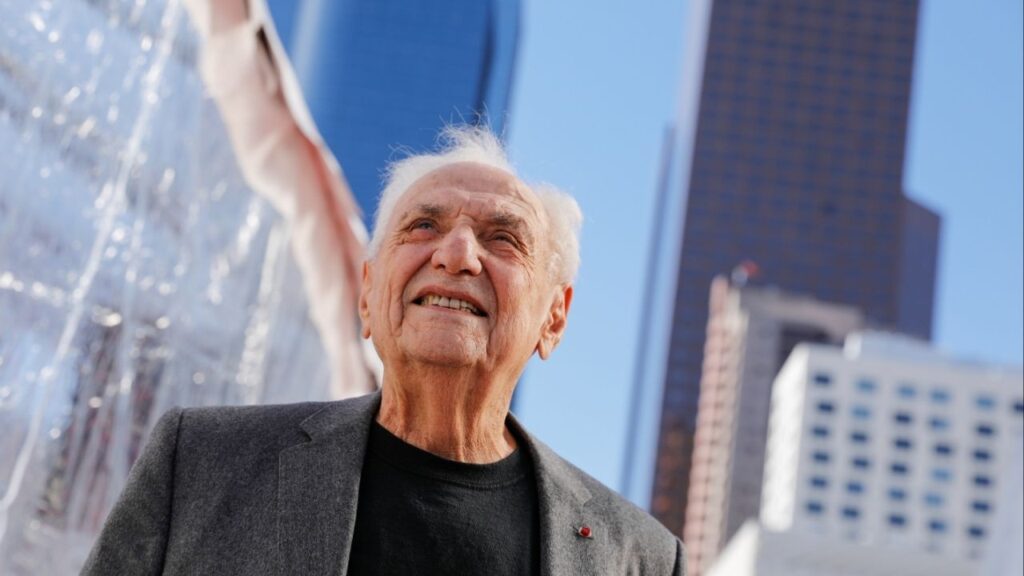The proposed Range of Light National Monument would transform 1.4 million acres of land in Fresno, Madera, and Mariposa counties. (GV Wire Composite/Paul Marshall)

- California legislators wrote a letter to Gov. Gavin Newsom calling on him to support the creation of the Range of Light National Monument.
- Proponents of the plan say it would protect the Sierra Nevada, including the giant Sequoia trees.
- Opponents say it would drastically change recreational activities at Shaver and Huntington lakes and result in poor forest management .
Share
Activist group Unite the Parks called on President Joe Biden to transform 1.4 million acres of Sierra National Forest land into a national monument, and it has the backing of three state lawmakers from the Valley.
But three local county supervisors wrote to the president on Monday, warning him the change could undo forest management efforts, end off-road vehicle recreation, regulate motorized boating, and possibly threaten private property rights.
(Correction: A previous version of this story reported the national monument designation could get rid of motorized boating. Some national monuments allow motorized boating with a permit)
“A lot of the great work that has been taking place the last five or six years to just really reduce the high hazard fuels would be effectively eliminated,” said Fresno County Board Chair Nathan Magsig, and co-author of the letter to Biden. “There’s also a lot of private properties in the area that could be drawn into this (proposed) Range of Light area. And so private property rights, in my opinion, could be in jeopardy. How Shaver operates today could be completely changed.”
Madera County Supervisor Robert Macaulay and Mariposa County Supervisor Miles Menetrey co-authored the letter.

Plan Would Eliminate Mining, Logging Operations
Dating back to 2013, the plan, largely created by former park ranger and activist Deanna Wulff, would turn the land between Yosemite and Sequoia/Kings Canyon National Parks into a national monument. National monuments guarantee protections to the land, eliminating mining and logging operations, as well as many recreational activities such as hunting, fishing, or off-roading.
An economic report identifies 57 logging jobs in the area. It says zero mining jobs would be displaced.
The Range of Light plan, published in July, says the designation would protect one of the most biodiverse regions in California, including the giant sequoias, unique to the area.
It would shift management of the park from the forest service — under the U.S. Department of Agriculture — to the National Park Service.
It identifies commercial mining, off-road vehicles, garbage, and livestock grazing as ongoing threats to the region.
“These objects remain under threat of loss, damage, and destruction without the preservation and restoration that a national monument would provide,” the plan reads.
Attempts to reach Wulff were unsuccessful. But National Geographic reports Wulff came up with the plan after spending the summer working at Tenaya Lodge. She lived in a tent to save money.
Wulff even got a congressional bill created in 2022 when California Rep. Jackie Speier authored the The Range of Light National Monument Act. The bill died in committee.
52 CA Lawmakers Support Range of Light
California legislators have taken the helm of pushing the bill forward, including Assemblymembers Joaquin Arambula (D-Fresno) and Esmeralda Soria (D-Merced), and state Sen. Anna Caballero (D-Merced).
The 52 legislators called on Newsom to pressure Biden to create the monument.
“Not only will the monument benefit native species, but it will also provide a peaceful respite for humanity. Social justice, accessible recreation, and health and wellness would be enhanced for the nearby population in the Central Valley, which is 73% people of color,” the letter stated.
Assemblymember Jim Patterson (R-Fresno), whose district encompasses the area, did not sign the letter. He did not return a call from GV Wire.
State Sen. Marie Alvarado-Gil also did not sign the letter. She was not immediately available for comment.
David Tangipa and George Radanovich — both candidates for Patterson’s seat — opposed the creation of the monument.
Tangipa said creating a national monument would make forest management even more difficult.
“Right now, our forest is in an extremely unnatural position. We need to have more access,” Tangipa said. “That way we can take care of the animals, the old growth trees, and work with the local partners here. I don’t think Washington should manage a monument here in California, I think our locals should.”
Radanovich said “foolish bills” like these are all the more reason to support Donald Trump, who could undo the designation if Biden pursued it.
“We’ve already lost one third of our forests due to laws like the Range of Light proposal, laws which restrict our ability to properly manage our forests,” Radanovich said. “What we need is more hands-on forest management, including commercial logging if we want our forests to recover and thrive.”

Could Biden Unilaterally Create a National Monument?
Creating a national monument can either be done by Congress or by the president. Under the 1906 Antiquities Act, the president can unilaterally designate land as a place of historical interest, giving it the protections of a national park.
The presidential act does not require a public comment period. In recent years, attempts have been made to require public comment before land becomes a national monument. Utah Rep. Rob Bishop introduced a bill in 2013 to do just that. The bill failed, however.
Presidents, including Barack Obama and Donald Trump, have allowed public comment before designations.
But Wulff in her July plan called on Biden to use his executive power to create the Range of Light Monument. She said it would help the president achieve his “30 by 30 Plan,” putting 30% of the nation’s land under federal protection by 2030.
“Thus, it is appropriate that the President use his executive power to implement this national monument via a Presidential Proclamation using the Antiquities Act,” the plan read.
To Thin or Not to Thin?
While many have called forest thinning and prescribed burns as the best methods of protecting against wildfires, Wulff said thinning does the opposite. By thinning the forest, wind can travel through the trees more easily, spreading wildfires. Her plan had the support of more than 200 scientists from around the nation.
Moving management of the land to the park service would better protect it against wildfire, according to the plan. National Geographic quoted Wulff as saying the Forest Service is “an agent of the logging industry.”
The 2015 Rough Fire, 2021 KNP Complex Fire, 2020 Castle Fire, and 2021 Windy Fire all burned within national park land. The park service says prescribed burns protected Grant Grove against even worse damage during the Rough Fire.
A December 2023 study from UC Berkeley says prescribed burning and restoration thinning are effective at reducing wildfire risks.
The 20-year study in the Sierra found both prescribed burns and thinning were critical in protecting the Mariposa giant sequoia in Yosemite. The study said both needed to be used to significantly mitigate fire risks.
Magsig said it was prevention efforts by private property owners that kept the 2020 Creek Fire from burning through Shaver Lake.
“The research is pretty darn clear that these treatments are effective — very effective,” said study lead author Scott Stephens as quoted in UC Berkeley news. Stephens is a professor of fire science. “I hope this lets people know that there is great hope in doing these treatments at scale, without any negative consequences.”

How Would Designation Affect Private Property?
Most cabin owners in the area operate on leases from the Forest Service, said Tim Young, broker associate with Pinnacle Real Estate. He said he hesitated selling cabins to people as the Forest Service would at times not renew permits. What were once 49-year permits have been reduced to 19-year permits. Tangipa said many are now on six-year leases.
He said given the track record around national monuments, he didn’t think the federal government would renew those leases.
Young said cabin owners will occasionally receive notices their homes may be converted to campgrounds, but the plans do not come to fruition.
More than property issues, Young feared the attraction a national monument designation would create. The Range of Light plan would attract 2.7 million visitors annually, creating 2,839 jobs. Given how crowded Shaver and Huntington lakes are in the summer, Young said the only way to handle that level of traffic would be significant infrastructure investments, damaging the very park activists want to protect.
“This land between Sequoia and Yosemite could be used by millions of people, why would you want to do that?” Young said. “You can’t put a million people in that country without roads and restaurants and restrooms.”
Magsig feared a national monument designation would affect usage around Shaver and Huntington lakes. Hunting could be reduced or eliminated.
Bald Mountain hosts fantastic 4×4 trails, Magsig said.
“Would the federal government come in and use their federal powers to try to take people’s private property?” Magsig said. “Would they put rules in place that would strictly limit how they can use and enjoy the forest? All of these are big question marks.”
RELATED TOPICS:
Categories

American Architect Frank Gehry Dies at Age 96


















